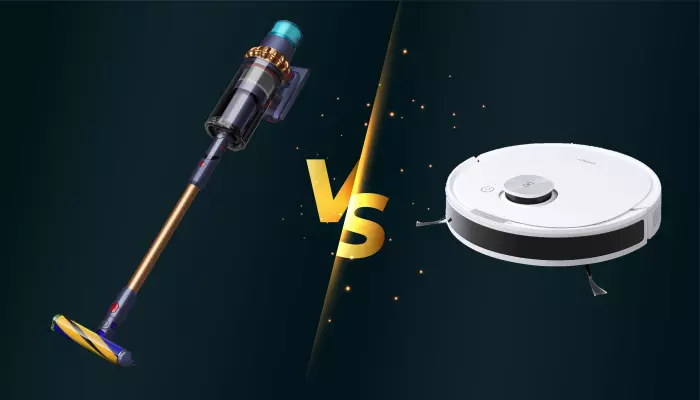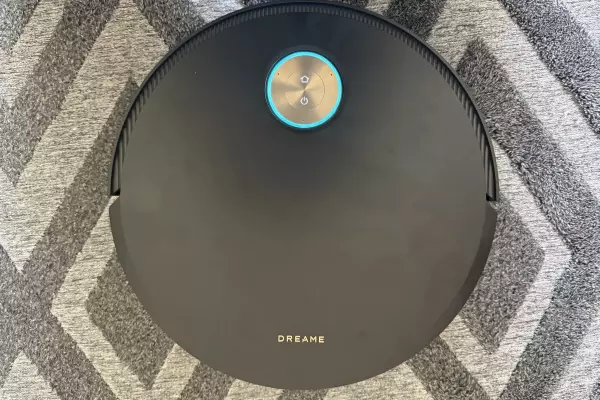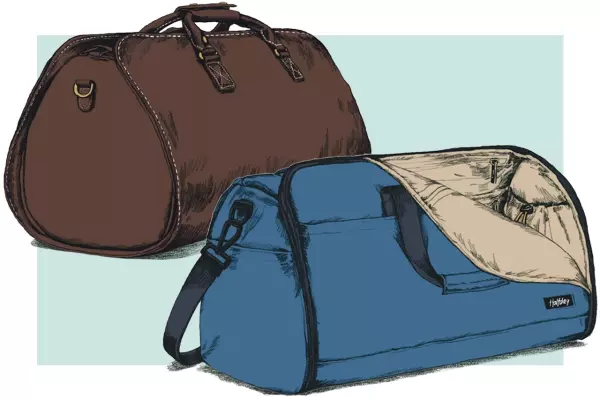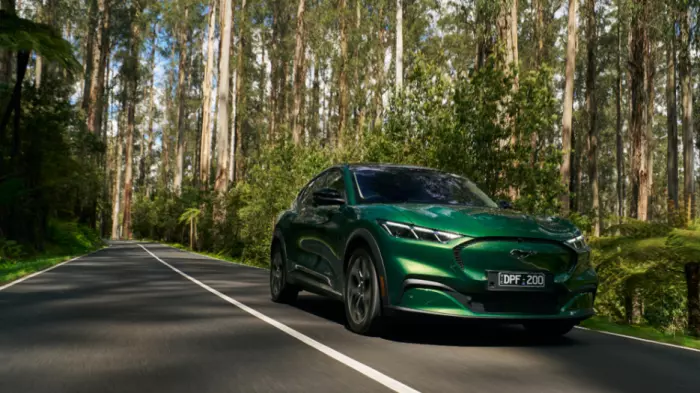I have a confession. I hate vacuuming.
I hate it so much that I made a deal with my wife when we moved in that I would take care of the toilets if she vacuumed.
But I’m also a sucker for tech and had longed for one of those little robot guys that would scoot around the house once a day, so I would never have to think about it again!
Or perhaps there is a vacuum that is so cool and gadget-like that it makes the objectively worst chore a pleasure?
It just so happened that I had the opportunity to try out both options simultaneously.
First, UK-turned-Singaporean company Dyson provided their flagship Gen5outsize for me to trial – the gadgety-est of all gadgety manual vacuums that use the most advanced dust collection technology that money can buy.
Second, Chinese Ecovacs provided the Deebot N10, a budget self-driving vacuum cleaner and mop that is easy on the bank account and crams a fair bit of tech into a relatively small space.
In this review, I will pit the two against each other in a BattleBots-style fight to the death to decide once and for all where my hard-earned money should go.
Each contender will be marked on three criteria:
- Value for money,
- Depth of clean, and
- Ease of use.
It’s a battle of vacuum tech, the likes of which the world has never seen before!
Let the games begin.
Value for money
The Dyson Gen5outsize comes in at about $1,800 on the vendor’s website, including a range of attachments.
In the box was the handheld unit with an XL dust collection chamber, an XL standard carpet brush, an XL hardwood brush with laser for finding dust on hard flooring, an upholstery attachment, a combo brush tool, and a crevice getter that fits snugly into the tube.
Plus, the accessory pièce de résistance, the floor dock, allows you to store and charge the device anywhere without drilling into a wall.
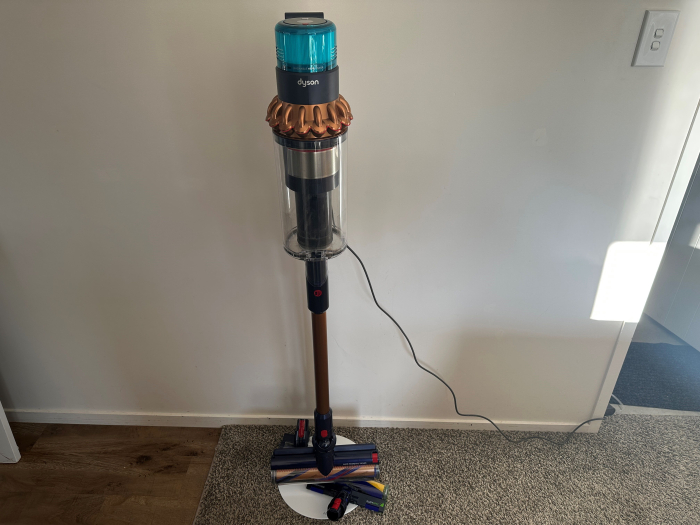
The floor stand is revolutionary if you are a renter or just don't want to drill into the wall. (Image: BusinessDesk)
Meanwhile, the Deebot N10 retails for about $1,200.
In the box, you get the robot, the charging station, and the mop attachment.
While the Dyson is an expensive premium version of a stick vacuum with many add-ons in the box, the Deebot is still an absolute bargain version of a robot vacuum.
It’s a tough one, and the only slight edge is that the Deebot is ostensibly fully autonomous and has a mop function as well.
Winner: Deebot, by a small margin
Depth of clean
One of the cool things about the Dyson is a tiny metal disc that sits in the unit that senses the size of the particles it picks up as it sucks, as small as 10 microns, which is about the size of a pollen particle.
If you hold the vacuum over one spot, you can watch the particle count eventually reduce and see in graph form (one of my favourite forms) exactly how much dust you are collecting.
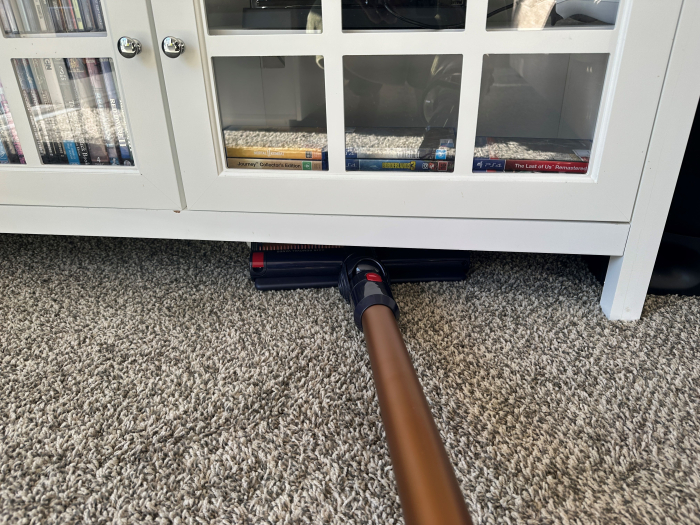 The Dyson has an impressive range of angles. (Image: BusinessDesk)
The Dyson has an impressive range of angles. (Image: BusinessDesk)
So, of course, immediately after the Deebot had gone around the house, I pulled out the Dyson and hit a patch of carpet.
While the Deebot is excellent for picking up larger and more obvious ephemera (like the feathers from pillows or crumbs), it’s a surface-level clean that is great for hard floors and even the top layer of carpet but not getting any deeper than that.

The Deebot was able to get under the cabinet neatly as well. (Image: BusinessDesk)
The mop function on the Deebot is similar; the mop pad certainly comes up dirty after it goes around, but any unnoticed splashes of coffee that may have dried will not be removed.
Winner: Dyson, by a long way
Ease of use part one – the downsides
There are two very different sets of expectations for these two vacuum cleaners.
A robot you expect to be set and forget. It has a house it lives in and just comes out and only calls you when there’s an issue like the dust bag in its house needs replacing.
On the other hand, with the stick vacuum, you want to be able to cover a wide area, be straightforward, and be reliable.
Both of our contenders come in close but don’t quite get full marks.
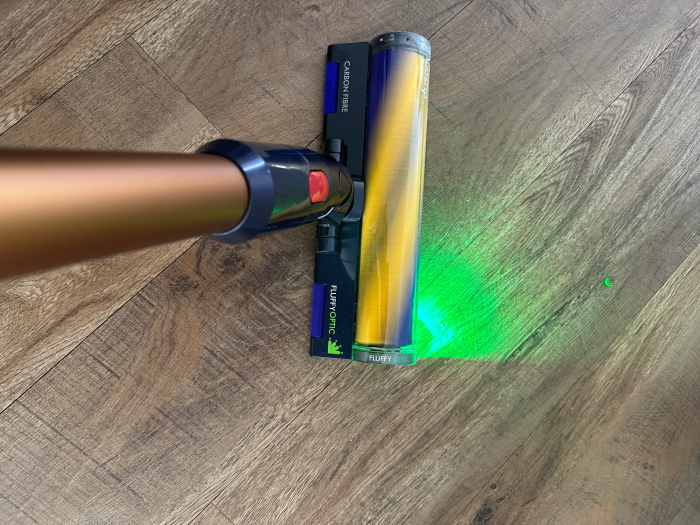
The famous laser that shows up dust on a hard floor. (Image: BusinessDesk)
First, the negatives.
The Dyson is heavy. This version doesn’t use a trigger to run, just having an on/off button, which is great, but the weight is all still right on one part of your hand and wrist.
The outsize version is also heavier, so after 15 minutes or so of using the device, I started getting a bit of an ache in that area. Interestingly, I didn’t have it as much with the smaller Gen5detect.
Anyone with any grip or hand problems would definitely struggle with this vacuum.
The battery is good and will give you 40 minutes to an hour of uninterrupted service, depending on the power level you have it at. Depending on the size of your house and how long you spend on each area, that may or may not have you fully covered.
In that time, you will definitely have to empty the chamber several times if you have carpet.
The larger chamber is an improvement on the previous versions, for sure – but it’s still filling up fast enough that it’s an interruption to the cleaning.
The Deebot is not nearly as low-touch as I was hoping.
You cannot leave any cable of any kind in its cleaning space, you can’t leave shoes with loose shoelaces or anything similar because it will wrap around the big wheels and stop the robot.
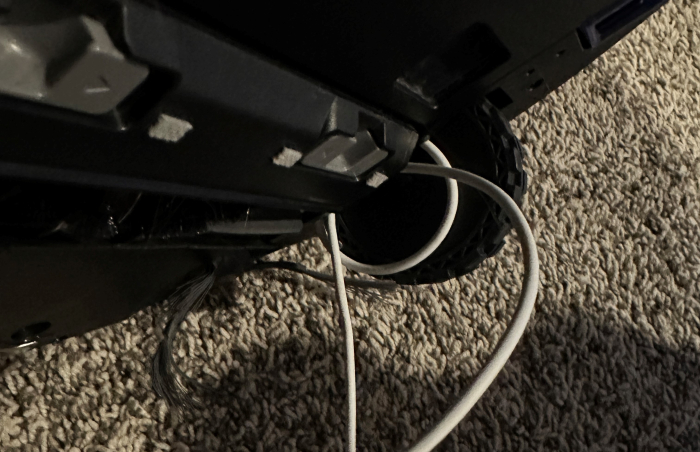
It's wheely frustrating. (Image: BusinessDesk)
It climbed over a small metal frame of a piece of furniture and then couldn’t get out again, and once, it got wedged under a Swiss ball and couldn’t escape from under it.
The Deebot N10 is certainly not from the Boston Dynamics lab because it has a knack for finding ways to get stuck that are impressive.
Its house is quite big, and the only space we have for it is in the kitchen, about two metres from the cat food bowls.
As it cleans, it will manage to move those bowls into the perfect position so that when it comes back to charge, it gets the bowl between it and its house.
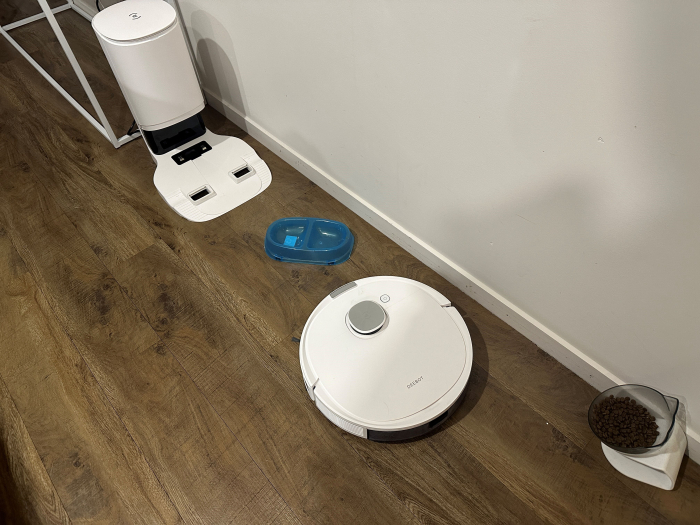
It's a cat bowl-hunting robot, I swear. (Image: BusinessDesk)
The worst part is that the notifications that something has gone wrong are only available in the app, so you will never know unless you check.
But it’s not all bad.
Ease of use part two – the positives
There is no denying that Dyson knows what it is doing when it comes to vacuums.
So many of the frustrations of a stick vacuum, like hair getting tangled, the dust tank being difficult to empty, and filters being difficult to change – have been addressed.
While they may not be perfect, generally, there are very few problems or frustrations with the vacuum in general.
You know it’s working, and you know it’s working well because the graph tells you so, and you can see the dust pile up in the tank.
When you remember to make sure the floor is 100% clear before you leave the house, Deebot does what it does well.
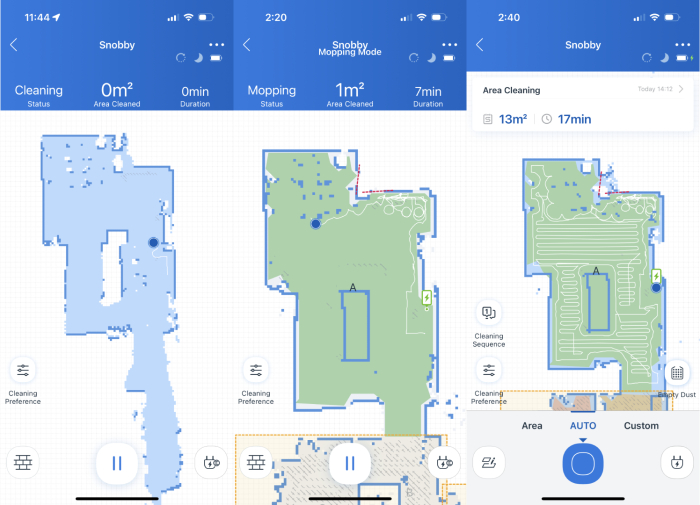
It learns over time what the house looks like, and you can set different areas manually. (Image: BusinessDesk)
You can set zones and no-go areas and different intensities for different spots.
It empties its little chamber into the bag in its house after every meal (except once it didn’t, and I had to do it manually), and the app is medium difficulty to figure out, but not that hard.
But sadly, in this case, the negatives outweigh the positives. I’m a millennial tech reporter, there is no way my floor will always be free of charging cables; it’s just not possible.
The winner: Dyson, by about the length of a cable
Final result
I haven’t tried out another robot vacuum, so maybe if I went for a $2,000 model, my frustrations with it would disappear, and it would be worth it 100%.
And maybe other stick vacuums wouldn’t have the same mod-cons that make the Dyson so impressive.
Maybes aside, in this battle, the victor is clear: It’s the Dyson Gen5outsize with the technological knockout.
But I’d still rather do the toilets.


